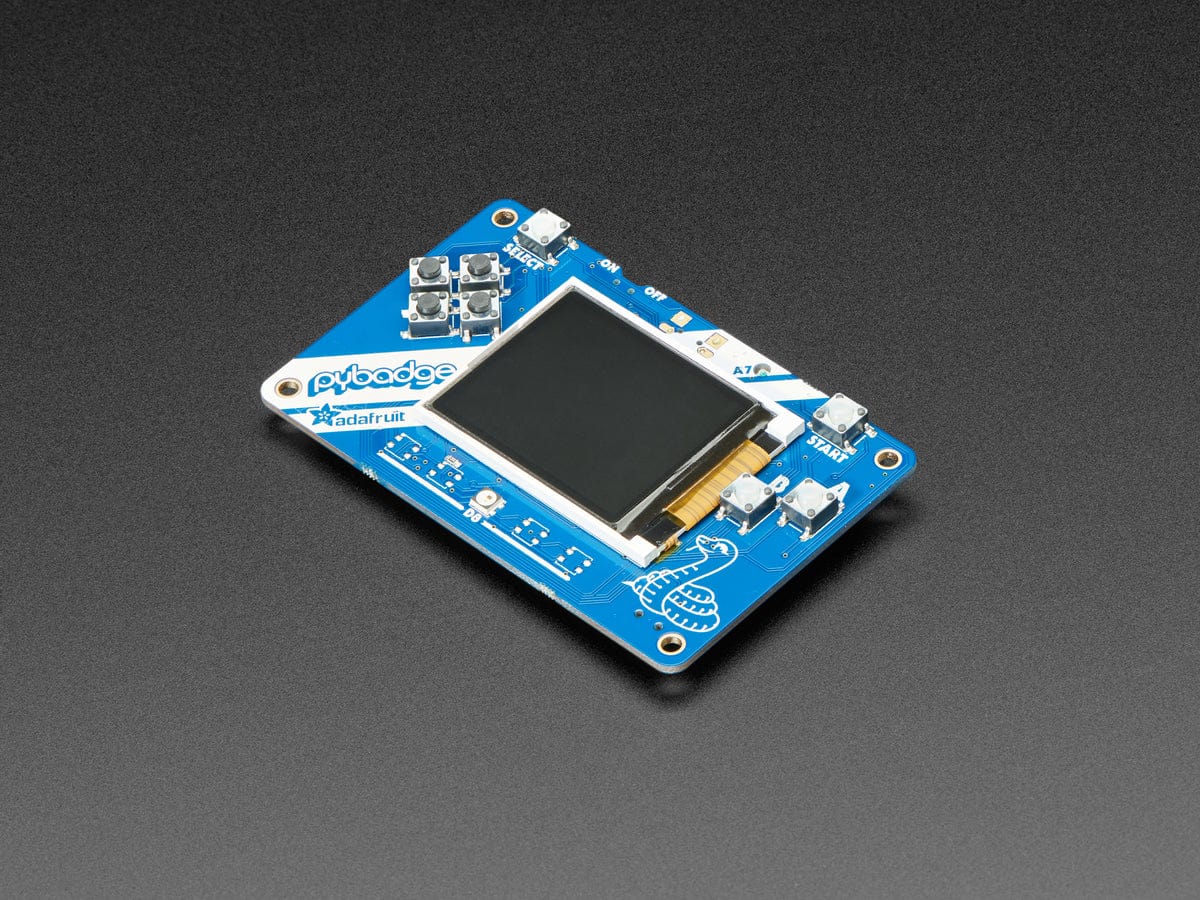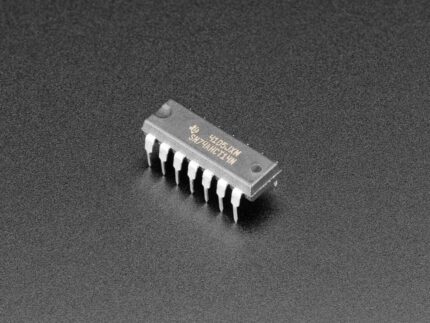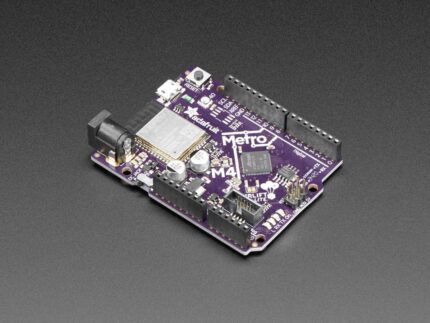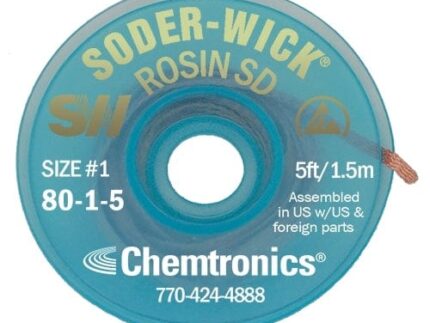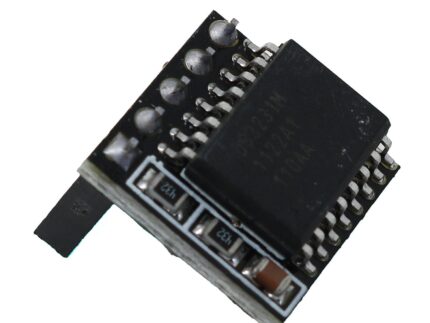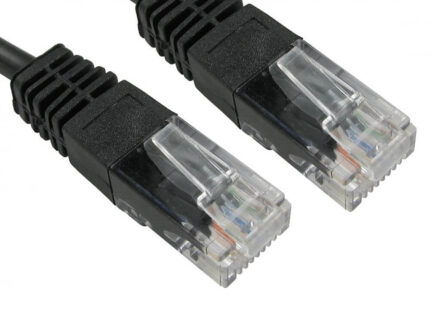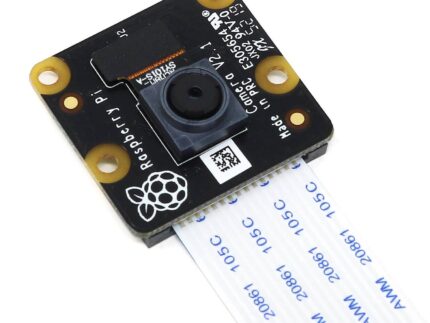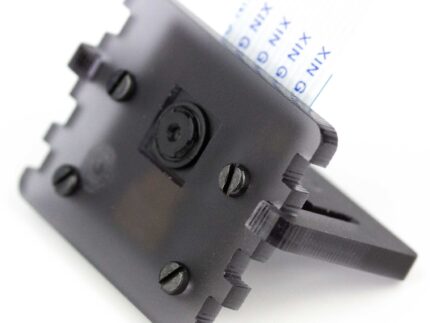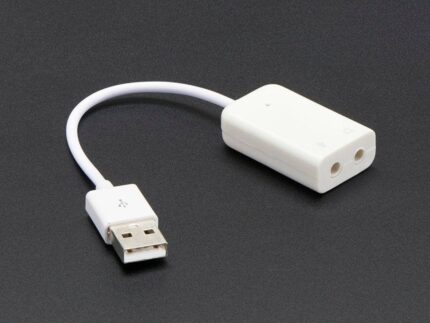Adafruit PyBadge LC – MakeCode Arcade, CircuitPython, or Arduino (Low Cost Version)
What’s the size of a credit card and can run CircuitPython, MakeCode Arcade or Arduino even when you’re on a budget? That’s right, it’s the Adafruit PyBadge LC! We wanted to see how much we could cram into a 3 3⁄8 × 2 1⁄8 inch rounded rectangle, to make an all-in-one dev board with a lot of possibilities, and this is what we came up with.
The PyBadge is a compact board, like we said, it’s credit card sized. It’s powered by our favorite chip, the ATSAMD51, with 512KB of flash and 192KB of RAM. We add 2 MB of QSPI flash for file storage, handy for images, fonts, sounds, or game assets.
This is the Low Cost version of our more fully featured Adafruit PyBadge. We pared down the hardware to make it even more affordable, and you can still use it with MakeCode Arcade, CircuitPython or Arduino! The LC version has the same processor chip, QSPI Flash, on/off switch, buttons, buzzer, light sensor and battery circuit. It does not have Feather headers, JST STEMMA connectors, LIS3DH accelerometer, or optional speaker connection. Instead of 5 NeoPixels there is only one in the center front.
On the front you get a 1.8″ 160×128 color TFT display with dimmable backlight – we have fast DMA support for drawing so updates are incredibly fast. There’s also 8 silicone-top buttons, they are clicky but have a soft button top so they’re nice and grippy. The buttons are arranged to mimic a gaming handheld, with a d-pad, 2 menu-select buttons and 2 fire-action buttons. There’s also a NeoPixel LED in the front to dazzle or track activity.
For built in sensoring, there’s a light sensor that points out the front. To make bleeps and bloops, there’s a built in buzzer-speaker.
You can power the PyBadge from any of our LiPoly batteries, but we like this 420mAh one. An on-off switch will save battery power when not in use. Or power from the Micro USB port – it will also charge up the battery if one is attached.
Now, how to program it? Well you’ve got a lot of options!
- MakeCode Arcade is the easiest to start for making games, you can drag-and-drop blocks and load games over the disk-drive bootloader
- CircuitPython lets you draw graphics, play wave files and print out text in any fonts – all in Python! There’s tons of sensor support as well.
- Arduino is low level, powerful, but a little more challenging. You can use Adafruit Arcada to interface with the hardware and it will abstract some of the nitty-gritty details like reading buttons for you.
Here’s a list of everything you get
- ATSAMD51J19 @ 120MHz with 3.3V logic/power – 512KB of FLASH + 192KB of RAM
- 2 MB of SPI Flash for storing images, sounds, animations, whatever!
- 1.8″ 160×128 Color TFT Display connected to its own SPI port
- 8 x Game/Control Buttons with nice silicone button tops (these feel great)
- 1 x NeoPixel for badge dazzle
- Light sensor, reverse-mount so that it points out the front
- Built in buzzer mini-speaker
- LiPoly battery port with built in recharging capability
- USB port for battery charging, programming and debugging
- Reset button
- On-Off switch
Technical Details
Product Dimensions: 85.7mm x 54.6mm x 10.0mm / 3.4″ x 2.1″ x 0.4″
Product Weight: 25.7g / 0.9oz
